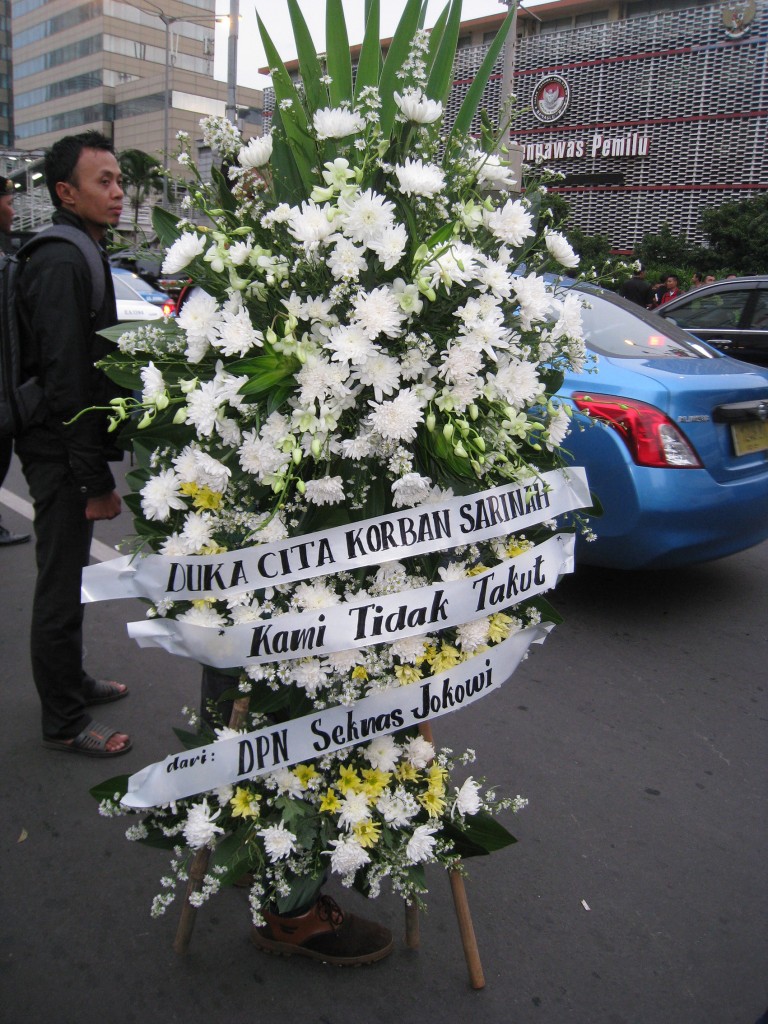By submitting your info, you agree to send it to MediaTech and VTT – Virtual Table Top, who will process and use it according to their privacy policy.
Social Login by MediaTech – A Game Changer for Your Business!
What is Social Login?
Social login lets your users use one of their existing social media accounts such as Facebook, Google, Twitter, Instagram, Yahoo, or LinkedIn to login into your website or mobile application, eliminating the need to submit to yet another off-putting registration process. Using social login makes it much more likely that your users will stick around. According to recent surveys by Blue Research and WebHostingBuzz:
- 86% of users say they are bothered by the need to create a new account to use a website
- 54% of users said they may actually leave a website and go to another rather than complete a registration form
- 88% of users admit to entering incomplete or incorrect data on registration forms
- 92% of users will leave a site instead of resetting or recovering login info
- 77% of users believe social login is a good registration solution
Could you be losing customers, driving them away with your registration process?
What are the Benefits?
The easier it is for people to access your website the faster they can start purchasing or enjoying your content. Here are the top 3 reasons for using social login.
- Reduce or Eliminate Registration Process. Eliminate the lengthy registration process. Users do not have to remember your website password because they are using their social login account instead of your website account.
- Increase Revenue. Social login users are more likely to make purchases and subscribe to you services compared to those who don’t use social login.
- Security Advantages. You don’t have to deal with security and passwords issues; you pass them to your social login vendor to handle.
You can also use Social Login by MediaTech on your internal applications, to speed up your workflow and eliminate the need for password management. Your employees will love you for it.
How to implement social login for your website and mobile application?
Contact us today and have our social login experts implement the login process for your business.
Suicide Attacks Prevent Terror Groups from Achieving Political Goals, So Why Are They Increasing?
Memorial at the site of 2016 Jakarta, Indonesia attacks.
Why do modern terror groups seem to favor suicide attacks as the tactic of choice? Studies have shown that engaging in suicide terror tends to reduce the group’s chances of achieving their desired political outcomes. Suicide attacks are so loathsome and inhumane that they decrease the group’s ability to win concessions for their cause. If your foe is so fanatical and implacable as to engage in suicide terror, why would you attempt to negotiate with them? This is exactly what happened with Israel and the PLO in the 1990s, when the first wave of Palestinian suicide bombings drove Israel from the negotiating table.
Given that the tactic doesn’t help the terror group achieve its goals, why do they keep doing it? Indeed, suicide attacks are on the increase, with more than 5000 occurring in the years since 1980. According to an interview with an LSU terror expert published in today’s Washington Post, the answer may be group survival.
Militant organizations go through different trends or fashions. Organizations must either adopt the fashion or become irrelevant. In the 1960s, the “international revolutionary” and the “urban guerrilla” were in fashion, and they preferred to rely on hijackings and hostage taking. As we’ve moved into the era of fundamentalist Islamist terrorism, organizations have had to adopt the fashions of fundamentalist Islam to stay relevant, and the key fashion is the suicide bomb.
If you’re a smaller organization like Ansar Bait al-Maqdis, and you want to draw the support and attention of the Islamic State and other groups, you start conducting suicide attacks. A few months after Ansar Bait al-Maqdis adopted suicide attacks, they were recognized as Wilayat Sinai, a province of the Islamic State, and they received funding and fighters from the core group, improving their survival prospects.
To understand why group survival is prioritized over the group’s very reason for existence – achieving their political aims – it helps to understand that their goals are often abstract, lofty, and so difficult as to be practically unachievable for the foreseeable future. If your goal is to establish a world wide caliphate, for example, you must prepare for the long game. And when you are playing the long game, group survival becomes more important than short term, incremental gains.
MediaTech’s latest courseware offering, Suicide Terror, explores these issues in detail. Learning objectives include:
- Describe the advantages of adopting suicide attacks as a terror tactic.
- List the historical precedents of modern day suicide terror campaigns.
- Describe possible motives for participating in a suicide attack.
- Describe reasons for using female suicide attackers.
- Describe strategies for countering suicide terror.
The course is available in both web-based and lecture formats. Face to face courses are taught by Dr. Xavier Stewart, BG (Ret).
MediaTech Training Promo
Nuclear Terror
The world just got more dangerous. Reuters is reporting that a significant quantity of radioactive material was stolen in Iraq, stoking security fears.
Iraq is searching for “highly dangerous” radioactive material stolen last year, according to an environment ministry document and seven security, environmental and provincial officials who fear it could be used as a weapon if acquired by Islamic State.
The material, stored in a protective case the size of a laptop computer, went missing in November from a storage facility near the southern city of Basra belonging to U.S. oilfield services company Weatherford (WFT.N), the document obtained by Reuters showed and officials confirmed…
The document, dated Nov. 30 and addressed to the ministry’s Centre for Prevention of Radiation, describes “the theft of a highly dangerous radioactive source of Ir-192 with highly radioactive activity belonging to SGS from a depot belonging to Weatherford in the Rafidhia area of Basra province.
– Reuters (2016)
Officials fear that this material could be used to create a “dirty bomb” or some other type of radiological dispersal device (RDD). A dirty bomb can be easily constructed by combining the Ir-192 with conventional explosives to contaminate an area with radiation. Indeed, just leaving the material unshielded in a public space over several days could cause massive harm. Add to this the fact that ISIS operates in the area from which the material was stolen and we have ample cause for grave concern.
MediaTech’s latest courseware offering, Nuclear Terror: RDDs and INDs, explores these type of threats in detail. Learning objectives include:
- Define Radiological Dispersal Device (RDD).
- Define Improvised Nuclear Device (IND).
- Describe ways to reduce the threat posed by improvised nuclear devices.
- Describe planning considerations for an RDD attack.
- Describe planning considerations for an IND attack.
The course is available in both web-based and lecture formats. Face to face courses are taught by Dr. Xavier Stewart, BG (Ret). Other courses in the series include:
- Oklahoma City new revelations: An update 2014: A detailed, graphic presentation of the Oklahoma City terrorism attack with new lessons learned and updates. 180 minute course. Intermediate Incident Command Level Lecture.
- Oklahoma City CBRNE/WMD Table Top Exercise: 2014: What if a Weapons of Mass Destruction had been used in Oklahoma City terror incident. An emergency management scenario asks “How would you respond accordingly.” You select a 1 or 2 Day scenario. Advanced Incident Command Level.
- Biological disease incident: A graphic depiction of biological diseases or weapons grade terrorism acts from 1915 to 2013. 180 minutes. Intermediate Lecture.
- Biological disease incident Table Top Exercise: You choose a biological agent from the following list below. We will design an incident scenario to test your response to and mitigation factors for such an incident. You select a 1 or 2 Day scenario. Advanced Level.
- Radiation incidents: A graphic depiction of radiological incidents and terrorism acts from 1915 to 2013. 240 minutes. Basic Level Lecture.
- Radiation incidents Table Top Exercise: You choose a radiological agent from the following list below. We will design an incident scenario to test your response to and mitigation factors for such an incident. You select a 1 or 2 Day scenario. Advanced Level.
- Radiological Dispersal Devices: A graphic depiction of Radiological Dispersal Devices and Weapons and terrorism acts up to 2013. 120 minutes. Intermediate Level Lecture.
- Domestic Terror Briefing: A graphic depiction of domestic and international terrorism acts up to 2014. 240 minutes. Intermediate Level Lecture.
- Nuclear Reactors: A detailed description of nuclear power plants and the issues with security, response to and protection of these critical Infrastructure facilities and how to prepare for a catastrophic incident. 180 minutes. Advanced Level Lecture.
- Acute Radiation Syndrome: A graphic depiction of the physiological effects of Acute Radiation Syndrome 2014. 60 minutes. Advanced Level Lecture.
- Medical Effects of Ionizing Radiation: Late effects: A graphic depiction of the medical effects of Ionization Radiation and the physiological effects of Late Onset Radiation Syndrome.120 minutes. Advanced Level Lecture.
- Chemical, Biological, Radiological, Nuclear and High Yield Explosives (CBRNE) assets and construct: A briefing on the CBRNE Emergency Response capabilities of the US Military (National Guard and Active Duty Forces) 75 minutes. Basic Level Lecture.
- Nuclear Weapons. Introduction to tactical nuclear weapons and the extreme damage it has on the infrastructure. Challenges to First responders are addressed. 240 minutes. Advanced Level Lecture.
- Psychological considerations: CBRNE: A graphic depiction of the psychological effects of Radiation attacks has on a populace. 60 minutes. Intermediate Level Lecture.
- Pulmonary physiology: A graphic depiction of WMD/CBRN on pulmonary physiology and the challenges in caring for these types of injuries in the EMS and medical center arena. An advanced understanding of the principles of contamination and medical care while in PPE. 120 minutes. Advanced Level Lecture.
- Physical Principals: Physics 101: A graphic depiction of radiation, isotopes, and physical properties of radiation and mitigation techniques. An advanced understanding of the principles of Alpha, beta, gamma, neutron and x-rays and the physiological effects. 120 minutes. Advanced Level Lecture.
- Madrid Bombing Table Top Exercise addressing if a WMD was used: A detailed, graphic presentation of the Madrid terrorism attack if a WMD was used. You select a 1 or 2 Day scenario. Advanced Level Lecture.
- Nerve Agent: A graphic depiction of WMD/CBRN and nerve agent damage on human physiology. Advanced physiology and the challenges in caring for these types of injuries in the EMS and medical center arena. The challenges of differentiation of these agents and a terrorism WMD incident are addressed. An advanced understanding of the principles of contamination and medical care while in PPE. 240 minutes. Advanced Level Lecture.
- Decontamination in WMD/CBRNE/TIC/TIM environments. The challenges. 75 minutes. Intermediate Level Lecture.
- Vesicants: A graphic depiction of WMD/CBRN vesicants damage to humans on physiology and the challenges in caring for these types of injuries in the EMS and medical center arena. The challenges of differentiation of these agents and a terrorism WMD incident are addressed. An understanding of the principles of contamination and medical care while in PPE. 120 minutes. Advanced Level Lecture.
- Chemical Incidents: A graphic depiction of WMD/CBRN Chemicals (Toxic Industrial Materials- TIMS and Toxic Industrial Chemicals-TICS) on human physiology and the challenges in caring for these types of injuries in the EMS and medical center arena. The challenges of differentiation of these agents and a terrorism WMD incident are addressed. An advanced understanding of the principles of contamination and medical care while in PPE. 120 minutes. Advanced Level Lecture.
- Chemical Incidents: You choose a chemical agent from the following list below. We will design an incident scenario to test your response to and mitigation factors for such an incident. You select a 1 or 2 Day scenario. Advanced Level lecture.
- Cyanide: A graphic depiction of cyanide agents and the damage on human physiology. Advanced physiology and the challenges in caring for these types of injuries in the EMS and medical center arena. The challenges of differentiation of these agents and a terrorism WMD incident are addressed. An advanced understanding of the principles of contamination and medical care while in PPE is also discussed. 2012. 60 minutes. Advanced Level Lecture.
- Incapacitating Riot-control agents: An advanced course and graphic depiction of these agents during civil disturbances and crowd control on human physiology and the challenges in caring for these types of injuries in the EMS and medical center arena. The challenges of differentiation of these agents and a terrorism WMD incident are addressed. An advanced understanding of the principles of contamination and medical care while in PPE. 60 minutes. Basic Level Lecture.
- Pandemic Events: preparation 2013 and beyond: A graphic depiction of the effects and interruption of a pandemic event on continuity of operations and government. The course examines the effects on the populace in particular, the pulmonary system and the challenges in caring for these types of injuries in the EMS and medical systems arena. An advanced understanding of the principles of contamination and medical care while in Protective Personal Equipment (PPE) and the challenges for the National Guard and other entities. An advanced understanding of the principles of contamination and medical care while in PPE. 2013. 90 minutes. Intermediate Level Lecture.
- Agricultural Terrorism: Impacts and Preparedness 2014. A depiction of the effects and interruption of an attack on our agriculture. A zoonotic disease and vector approach to the impacts of a criminal act or terrorism attack would have on our crops and animal populations are discussed. This impact would also cause severe interruption to our government as it relates to continuity of operations (COOP) and government (COG). The lecture examines the effects on the populace in particular, the mass disruption and panic, psychological and economic impacts. In addition, the lecture discusses the challenges in caring for a populace, food distribution and logistical challenges and prioritization of resource management and allocation of resources. An advanced understanding of the principles mass care looking at ESF 6 and ESF 8 under the NIMS construct is reviewed. The challenges for the National Guard and other agencies are also discussed. An advanced understanding of the principles of medical care for this type of event is examined. 240 minutes. Intermediate Level Lecture.
- AQ Operatives, Suicide Bombers and UAVs: A Nexus: A historical view of tactics, techniques and procedures on Al Qaeda and specificity on future threats current through 2014. A detailed review of female suicide bombers, methods, tactics and future threats in the international arena is also addressed. Some graphic case studies are reviewed. A graphic depicting on tactics and techniques of Guerrilla warfare to include devices made to inflict maximum damage and casualties. A graphic presentation of lone wolf actors in the U.S. and abroad. Reviews tactics, techniques and methodologies. Detailed history with weapons of choice. Finally, the use of Unmanned Aerial Vehicles by the CIA and DOD is reviewed with strategic and national implications. It includes a detailed overview of drone attacks and terrorism. Targeting and intelligence use are reviewed. 240 minutes. Advanced Level Lecture.
- World Trade Center update: 2014 and beyond: A presentation of the first bombing to the 9-11 tragedy with rarely seen footage and new considerations as a nexus to other terrorism acts. The clinical implications of dusts, fumes and vapors in occupational circumstances for First Responders and Receivers. Long-term consequences of such attacks on the populace psychologically, economically and impacts on infrastructure are considered. 240 minute lecture/interactive discussion. Advance Level Lecture.
Please contact us to help you to meet the many requirements associated with your CBRNE mission.
Please contact Mr. John White to discuss meeting the many County Government requirements.
641.856.8052 Email: jwhite@mediatechinc.com




